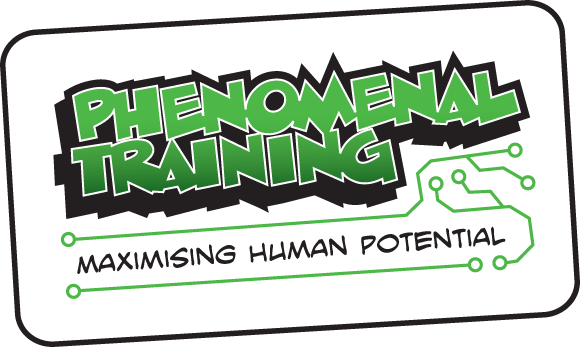Content. Updates. Feeds. Stories. Reports. News. Read me. Click here. Subscribe now.
There’s a lot out there isn’t there? For example, The Washington Post publishes an average of 1,200 stories, graphics, and videos per day. That’s more than one story every two minutes.
Perhaps unsurprisingly then, it is a fair bet that at least one of the news articles you have read in the last 24 hours was written by a robot. AI is now fairly commonplace in the production of news articles relating to sport or the financial markets. As technology improves and the machines become more “creative”, does this mean the human hack is being superseded by algorithms? Fundamentally, can journalistic flair be programmed or synthesised?
Over the last 10 years, the landscape of journalism has changed beyond recognition. The expectations for speed, responsiveness, engagement, methods of delivery, tone and style are all wildly different. Society is now greedy for content: we expect and demand minute-by-minute updates; we have no tolerance for stale news. Before the invention of Gutenberg’s printing press in 1440, it could take up to a year to copy a book by hand. The philosopher Francis Bacon wrote in 1620 that printing, gunpowder and the compass were the three inventions that have “changed the appearance and state of the whole world”. What would Bacon have made of Yahoo.com being the top-ranked new website with estimated 175 million monthly visitors? (http://www.ebizmba.com/articles/news-websites
AI is already helping news agencies meet this huge information demand. Automated Insights have developed “Wordsmith”, an AI writer, now used to write primarily stock market and sports articles, but also now available to the general public!
The high level of data analysis required for these kinds of articles lends itself perfectly to the strengths of AI. Wordsmith works by creating language rules that apply to data, feeding it synonyms and beautiful syntax, and programming it with the building block structure of a good story. So, Wordsmith relies not only on data, but more importantly, on a professional journalist who not only is a master of their craft but is also a fairly decent coder on the side.
Even Lockey Stewart, Solutions Architect at Automated Insights, admits that “the artificial intelligence is actually the human intelligence that is building the network of logic”. Silicon symbiosis in action again! These developments, and the evolution of the demands on a journalist have resulted in the study of Computational Journalism; defined as the application of computation to the activities of journalism such as information gathering, organisation, sense-making, communication and dissemination of news information, while upholding values of journalism such as accuracy and verifiability.
As Parry Malm, CEO of the pioneering AI for marketing business Phrasee.com shared with me recently “AI is an amplifier for existing life. For example, creating an email subject line is the least favourite aspect of a marketing writers job and yet is the most scrutinised. There are literally 1.3 billion ways in which an email subject line can be written – the AI can generate huge amounts of enquiry at scale, to decide the ‘least worst’ option most guaranteed to generate a click open, enabling the writer to focus on the core body of content. An exciting practical example of the cognitive insights the sheer processing power of AI can bring to augment human performance at work.
At the crux of this is the question; can creativity be programmed? This has been explored in depth by journalists, understandably so. However, from a purely technological philosophy, the answer depends on who you ask. Some experts believe that creativity is just problem solving and the production of new knowledge, and therefore well within the grasp of AI developments.
Championing the human is Dr Robert E Smith a leading expert in Artificial Intelligence (he has designed autopilot algorithms and consulted with the US military on drone weapon systems, amongst other projects). He was generous enough to give me a few hours of his time recently, and it was heartening to see where our work and philosophies align. Rob is currently writing a book focusing on creativity, as he believes this to be the unique human skill that will remain unmatched by a computer program.
However, it is not only AI which is changing journalism: social media technology has had an enormous impact on the way journalists work, in particular Twitter, newsfeeds and interacting with blog communities. Journalists now need to care about where audiences are and how they are going to reach those audiences.
There is also a generational divide in how a journalist approaches relationships. 35+ may feel like they are old school in that they prefer to pick up the phone, go for coffee etc. Younger people may feel more connected through social media, email, Whatsapp etc. It is too soon to have categorical evidence about whether old school or new school is more effective, but I think it would be a logical assumption that the deeper the connection between two people, the more emotive the level of information shared.
Whilst we as humans can only conceive and nurture our young at the start of life, and tend to our elders at end of life through physical ‘real world’ contact I think it would be fair to say that face-to-face, real world contact will remain the premium method for a good while yet. But that’s not to say that virtual communication cannot enhance and augment our relationships, I just know that for me, a video conference or text message is a lot more effective after the initial bond at a face-to-face meeting.
Whilst we as humans can only conceive and nurture our young at the start of life, and tend to our elders at end of life through physical ‘real world’ contact I think it would be fair to say that face-to-face, real world contact will remain the premium method for a good while yet. But that’s not to say that virtual communication cannot enhance and augment our relationships, I just know that for me, a video conference or text message is a lot more effective after the initial bond at a face-to-face meeting.
Different types of human interaction result in different outcomes. When you are looking to persuade a source, or customer to behave in the way you want, face-to-face communication is most effective on women but email is the best way to get a man to play ball. It’s all about their ego apparently… Face-to-face surveys still deliver the most representative results, and perhaps inevitably, an in-person meeting with a prospect is the very best sales tool.
Established journalists are most likely to say face-to-face interviews get the best from their sources, but we have to ask, will these findings still be relevant in 5 years time, when the Social Media generation are in their jobs and changing the world? To a generation to whom a phone call is anathema, will these results seem faintly hilarious? Sales channels have changed, and human communication has changed.
The job of a journalist may look completely different in 2020 than it did in 1990, but one thing will remain constant; the passion, authenticity, and creativity that the human journalist brings to any story. There simply isn’t code complicated and curious enough to create a synthetic Anthony Lloyd, Glenn Greenwald, or Caitlin Moran.
Special journalists don’t just report the dry facts, they bring news stories from around the world alive to the reader. We need their human voices, their empathy, their outrage, their crafting of beautiful sentences, their creativity, to not only keep us informed but to gift us compassion and remind us of our humanity.
The robots are coming; look busy!
Laura T x




Leave A Comment